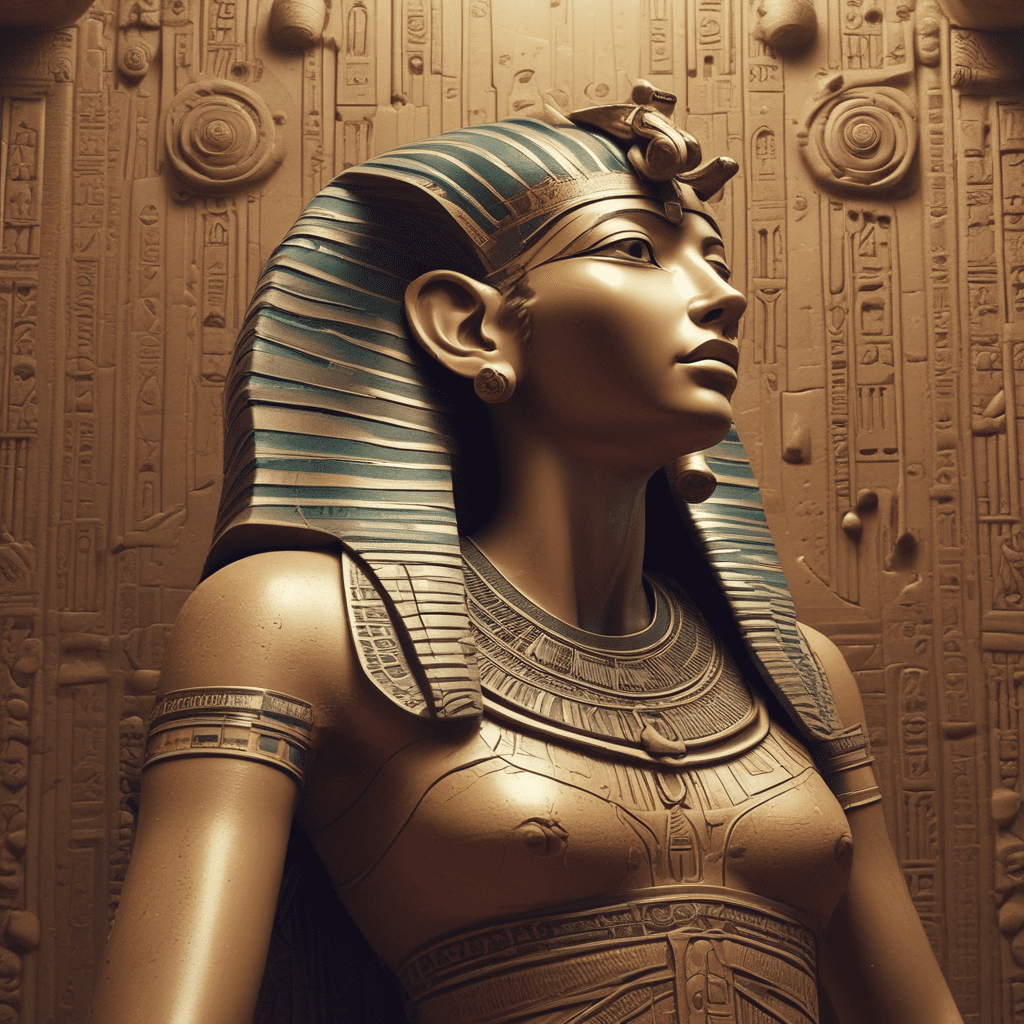The Myth of the Goddess Wadjet in Ancient Egypt
In Ancient Egypt, mythology and gods played a significant role in the lives of the people. One of the revered goddesses was Wadjet, often depicted as a cobra or a woman with the head of a cobra. Let’s explore the myth and significance of the Goddess Wadjet in Egyptian culture.
Who Was Goddess Wadjet?
Wadjet, also known as Buto, was a powerful goddess in Egyptian mythology associated with protection, royalty, and the afterlife. She was often depicted as a cobra, a symbol of protection and the Eye of Ra. Wadjet was one of the oldest deities in ancient Egypt, with her worship dating back to Predynastic times.
Significance of Wadjet in Ancient Egypt
As the personification of the cobra, Wadjet was considered a protector of the pharaohs and the people of Egypt. She was closely linked to the goddess Nekhbet, who represented the vulture, forming the “Two Ladies” who were protectors of Upper and Lower Egypt. The image of Wadjet often adorned the crowns of pharaohs, symbolizing their authority and protection by the goddess.
Mythological Stories of Wadjet
One of the most famous myths involving Wadjet is her role in the “Contendings of Horus and Set,” where she supported Horus in his battle against the chaotic deity Set. In this myth, Wadjet played a crucial role in safeguarding the rightful heir to the throne of Egypt, symbolizing order triumphing over chaos.
Another significant tale featuring Wadjet is her association with the Eye of Ra, a symbol of protection, healing, and power. The Eye of Ra, often depicted as a cobra, represented the sun god’s watchful and protective gaze over the land.
Legacy of the Goddess Wadjet
Throughout Egyptian history, Wadjet remained a vital deity associated with protection and royalty. Her image adorned amulets, jewelry, and temple walls, highlighting her enduring significance in Egyptian art and religion. Even today, the symbol of the cobra and the Eye of Ra continues to evoke the essence of this revered goddess.
Understanding the mythology and symbolism surrounding the Goddess Wadjet provides a glimpse into the religious beliefs and practices of ancient Egypt, showcasing the profound reverence and importance placed on divine protection and cosmic balance.
FAQs about the Myth of the Goddess Wadjet in Ancient Egypt
Who was the Goddess Wadjet?
Wadjet was an ancient Egyptian goddess often depicted as a cobra or a woman with a cobra’s head. She was highly revered as a protective deity and symbolized royalty and the land’s fertility.
What was Wadjet’s significance in Egyptian mythology?
Wadjet was considered the goddess of protection, lower Egypt, the sun, and healing. She was associated with the uraeus, the serpent symbol worn on the pharaoh’s crown, signifying her role in safeguarding the king and the kingdom.
How was Wadjet linked to the Eye of Horus?
Wadjet was closely connected to the Eye of Horus, a powerful symbol representing protection, royal power, and good health. The Eye of Horus was believed to have protective and healing qualities, much like Wadjet herself.
What temples or sites were dedicated to Wadjet?
Several temples in Egypt were dedicated to Wadjet, with the most famous being located in the city of Buto (Per-Wadjet). These temples served as centers of worship where ceremonies and rituals honoring the goddess were conducted.
Did Wadjet have any other names or titles?
Wadjet was also known by other





